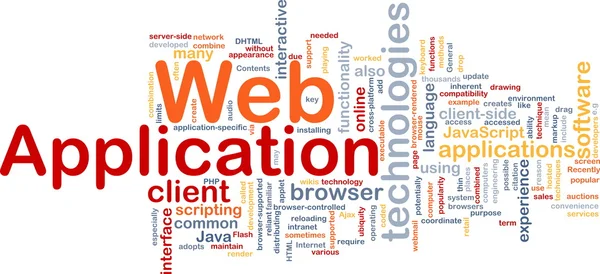Application Development
Creating compelling content for a web application’s website is crucial for engaging visitors and encouraging them to explore and use your application. Here are key elements and content ideas to include:
Crafting impactful content for your web application’s site helps build trust and spark user interest. Clear messaging, strong visuals, and user-focused benefits guide visitors toward taking action and exploring your app’s features.

1. Homepage
Headline and Value Proposition:
– Clearly communicate what your web application does and its main benefits in a concise headline.
Hero Image or Video:
– Use visuals to showcase the application in action. This could be a screenshot, demo video, or an animated illustration.
Call-to-Action (CTA):
– Place a prominent CTA button encouraging visitors to sign up, start a free trial, or explore the application.

2. About Page
Company Story:
– Share the background and mission of your company. Explain what motivated the creation of the web application.
Team:
– Introduce key team members and their roles. This adds a human touch and constructs trust.
3. Features or Services
Detailed Feature List:
– Provide an in-depth overview of the application’s features or services. Use visuals, icons, and concise descriptions.
4. Benefits
User Benefits:
– Clearly outline the benefits users will gain from using your web application. How does it solve their problems or make their lives easier?
Use Cases:
– Provide real-world examples or use cases to demonstrate the versatility and applicability of your application.
5. Testimonials and Case Studies
Customer Testimonials:
– Feature quotes or video testimonials from satisfied users.
Case Studies:
– Dive deeper into successful stories. Explain the challenges users faced and how your application helped them overcome those challenges.
6. Pricing
Transparent Pricing:
– If applicable, clearly outline your pricing plans. Feature the highlights remembered for each arrangement.
Free Trial or Demo:
– Encourage users to try the application with a free trial or demo. Provide information on how to get started.

7. Blog or Resources
Industry Insights:
– Share your expertise in the field through blog posts or articles. This establishes your authority and keeps visitors engaged.
Tutorials and Guides:
– Create helpful tutorials and guides related to your application. This can attract users and improve your SEO.
8. FAQ Section
Common Questions:
– Address frequently asked questions to provide clarity and reduce user inquiries.
9. Contact Page
Contact Information:
– Clearly display your contact details. Include a contact form for users to reach out.

10. Download or Sign Up
CTA for Sign-Up or Download:
– If your application requires users to sign up or download, ensure the process is straightforward and includes compelling CTAs.
11. Social Media Integration
Social Links:
– Connect your website to your social media profiles. Encourage visitors to follow for updates and engage with your community.
12. Privacy and Security
Security Measures:
– Assure users of the security measures in place to protect their data and privacy.
13. Support and Documentation
Help Center or Documentation:
– Provide comprehensive documentation or a help center to assist users in using your application effectively.
Remember to keep your content concise, visually appealing, and focused on addressing the needs and interests of your target audience. Regularly update the content to reflect changes, updates, or new features in your web application.
Why Choose Code Formats for Web Application ?
At Code Formats, we specialize in building smart, secure, and scalable web applications that power real-world business results. From SaaS platforms to enterprise portals, our solutions are crafted to solve complex challenges with elegant digital experiences. Here’s why clients choose us:
Custom-Built for Performance: We design web applications that are optimized for speed, security, and scalability — no unnecessary bloat or rigid templates.
End-to-End Development: From planning and prototyping to deployment and support, we handle every phase of the development process under one roof.
Advanced Tech Stack: Our team leverages modern technologies like React, Node.js, Python, and cloud platforms to deliver cutting-edge web apps.


